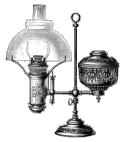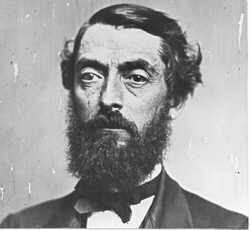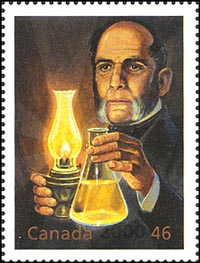Vice President Calvin Coolidge received an urgent call from Washington D.C. informing him of the death of President Warren Harding. Coolidge was immediately sworn in as the 30th President of the United States by his father, a Notary Public. Unique in American history, this event occurred by the light of a kerosene lamp in the old family homestead on August 3, 1923 at 2:47 a.m.
John Walker, a chemist, holds the distinction of being the inventor of one of the world's greatest advances - the friction match. Walker's recipe was a mixture of potassium chlorate, antimony sulphide and gum and his first matches, called 'friction lights', were first sold in 1827 to a Mr. Hixon, a solicitor in the town. Until that time, all but the wealthiest of people had to light lamps and candles from either another flame or from fire struck with flint and steel. Now humans had the additional freedom to produce fire, anywhere, on demand. Sadly, Walker did not patent his discovery and made little money from his invention.
The term 'kerosene' was first used by Abraham Gesner in the late 1840's to describe a lamp fuel he processed from coal. This early kerosene, from coal, was commonly referred to as 'coal oil.' The product was quite expensive and not affordable to the common man.
In 1783/4, Ami Argand, a Swiss chemist, developed the principal of using an oil lamp with a hollow circular wick surrounded by a glass chimney. The wick and chimney improved the combustion of the oil and resulted in a brighter light with less smoke. This was the first real advancement in lamp technology in thousands of years.
Paraffin (later known as kerosene) was discovered in 1830 by Reichenback and Christison, working independently of one another. The first plant to produce paraffin fuel oil for lamps was started in 1848 in Derbyshire, England, and the process was patented by Dr. James Young two years later.
Colonel Edwin L. Drake drilled the first oil well in Titusville, Pennsylvania, on August 27, 1859. By the early 1860's, kerosene, refined or distilled from crude oil, had become a widely used, safe and relatively inexpensive lamp fuel.
Early lanterns gave off a particularly warm glow, because their windows were translucent panels of animal horn. This explains why the English word "lantern," actually derived from the Latin "lanterna," was once traced to the folk term "lanthorn," said to mean "shining horn."

| Reference Desk | Lamp Information | Other Resources | On-Line Shopping |

Purveyors of Antique Lighting and Accessories
435 Main Street
 Hurleyville, New York 12747
Hurleyville, New York 12747

Edwin L. Drake

Abraham Gesner
Lighting Trivia
^ Top of Page
Privacy Policy | Terms and Conditions of Use | Announcements
Copyright © 2001-2011 ~ Daniel Edminster | The Lampworks ~ All Rights Reserved